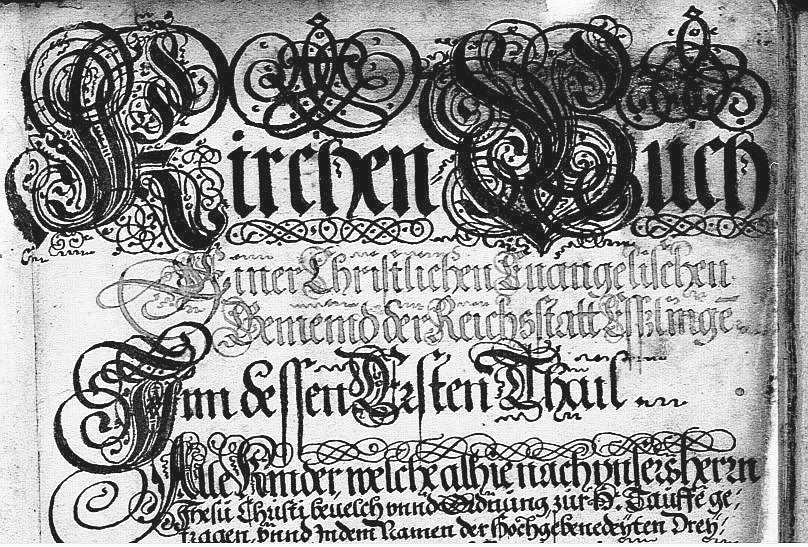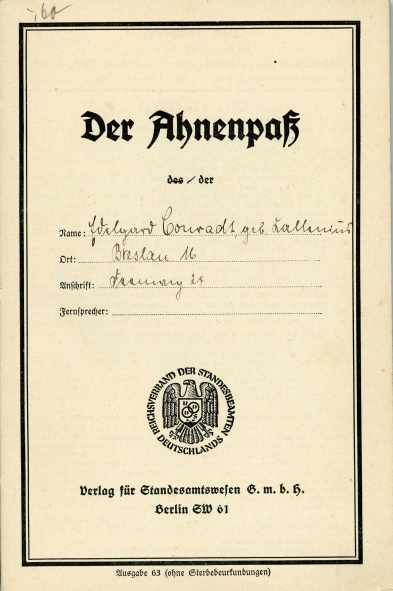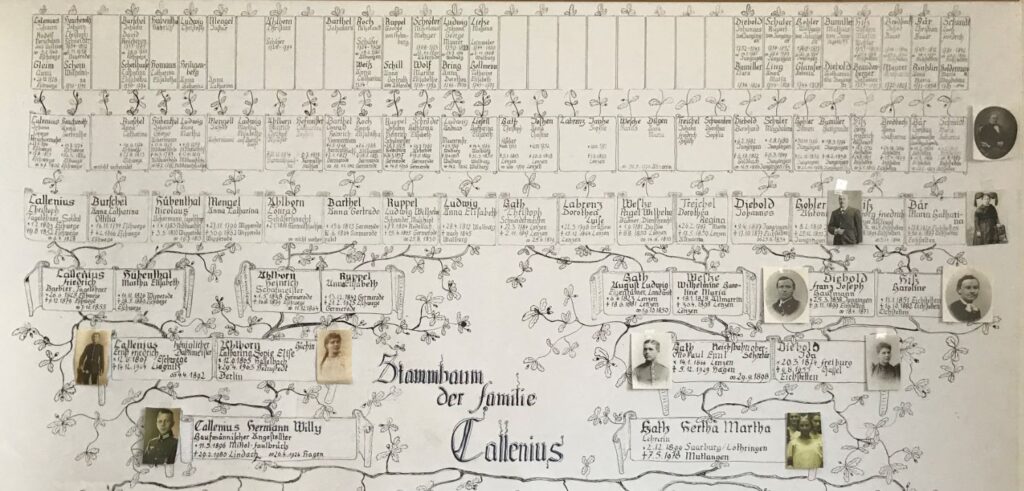My Ancestors
How did I come across this topic?
I think the key experience was during my elementary school years. We were given the task of creating an ancestry tree. So I asked my mother. It went relatively quickly, and I think I had more generations than any of my classmates. Then I received a copy of my grandparents’ family tree from the 1930s and other research fragments from more distant family members. And then there was a Hiss family tree (published in 1961 by Dr. Albert Hiss) with what was, at the time, an incredible wealth of data, going back 13 generations.
Beginnings of Research
Then at some point, I started doing some research myself. This wasn’t all that difficult for me, since my grandfather lived in the original location of his ancestors —Großheppach — and it was only 35 km away from my parents. I asked a second cousin, who was also doing research, how to do it. She went with me to the parish office, and I began researching in these thick 400-year-old, musty-smelling church records. So, I first researched Großheppach, then in the neighboring villages. In a few cases, I wrote to the relevant parish offices and asked for help, which I received without hesitation in many cases.
Church records centralized
At some point, the church records disappeared from the parish archives due to increasingly stringent preservation requirements for parish offices (fire safety, climate control, theft, etc.). So, the Protestant parishes gradually transferred the old books to the central archive in Stuttgart. Then I borrowed microfilm from the Protestant Archives of Württemberg (www.elk-wue.de) and researched them at home. Today, I do this online via the church record portal Archion (www.archion.de). It’s straightforward and of good quality. However, it is a poprtal for Protestant curch records. Only a very few Catholic ones are there. And not all church records are available in Archion yet. They are scanning and uploading step by step whole Germany. And, of course, the musty smell is missing…

Reading Old Writings
Reading the old writings wasn’t actually that difficult for me. Sure, it was a case of learning by doing, and at first I couldn’t read everything (which, by the way, isn’t always possible even today). But if you know what you’re looking for, reading tabular records, especially, isn’t that difficult. Writing styles have also changed over the centuries. But just as today, manuscripts vary in legibility, especially from person to person. I’ve included a few handwriting samples from different centuries under the chapter Tips&Trics/Reading Sources.
Documenting Results
At first, I typed the results in list format using a typewriter. I didn’t have a computer yet. Starting in 1986, I entered everything into my first computer in MS Word format – again in a list format. Along with a special program for family research, I still basically do this today (see Tips & Tricks). I also created ancestry trees. Hand-drawn on meter-long rolls. I still do that sometimes, too.
Genealogy programs
I also use genealogy programs. This has the advantage of making data easy to process and share. I’ve compiled a few tips and tricks for this as well.
My Ancestors
To make it easier to understand, I have to divide my ancestors into some different brances:
1. My paternal grandfather, Hermann Willy Callenius, and his ancestors came from northern Hesse, around Eschwege. Niddawitzhausen, Wipperode, Harmuthsachsen, Germerode, Albungen, Walburg, Neuerode, Rodebach, and of course Eschwege. For ancestors, see Callenius.
2. My paternal grandmother, Hertha Martha Kath, came from present-day Poland: West Pomerania (West Pomeranian Voivodeship), near Karlino, in German: Körlin, and includes the towns of Lenzen (Łęczno), Grüssow (Gruszewo), Dassow (Daszewo), and Alt Marrin (Mierzyn). My research results are based 100% on the available ancestral passports. Research there today is extremely difficult. A few years ago, I visited these towns on a Polish vacation. You can find a few impressions of the visit here at Pomerania. Half of the mother’s side of my grandmother’s family (Hiß) comes from the Catholic Hohenzollern (Jungingen/Hohenzollern), the other half from the Protestant Kaiserstuhl (Eichstetten).
3. Both of my mother’s parents, Hermann Jakob Mayer and Sophie Marie Stilz, come from long-established Großheppach families. The ancestors mostly come from the lower Remstal near Stuttgart (Großheppach, Schnait, Grunbach, Beutelsbach, Endersbach, Strümpfelbach).

